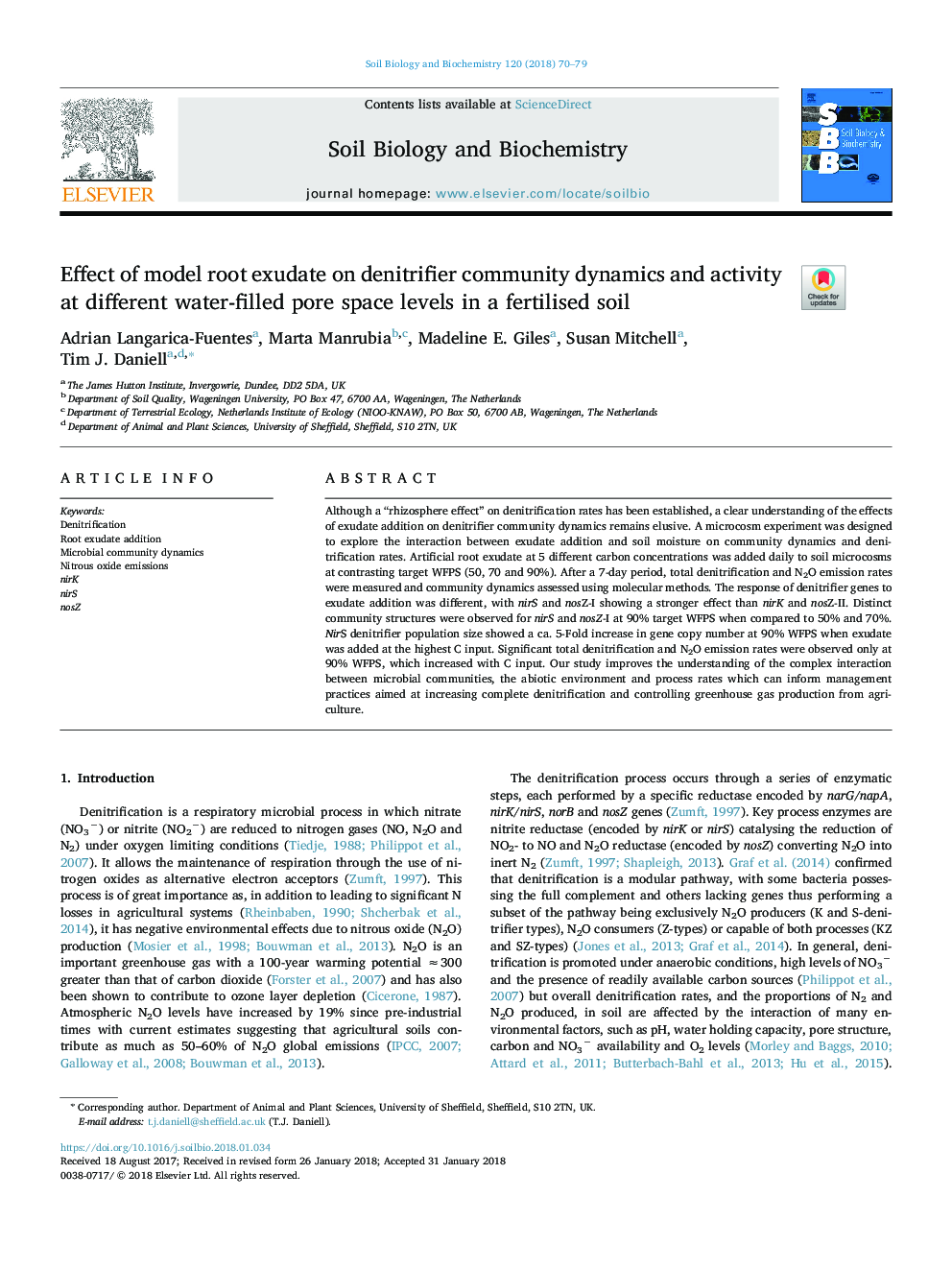| Article ID | Journal | Published Year | Pages | File Type |
|---|---|---|---|---|
| 8362788 | Soil Biology and Biochemistry | 2018 | 10 Pages |
Abstract
Although a “rhizosphere effect” on denitrification rates has been established, a clear understanding of the effects of exudate addition on denitrifier community dynamics remains elusive. A microcosm experiment was designed to explore the interaction between exudate addition and soil moisture on community dynamics and denitrification rates. Artificial root exudate at 5 different carbon concentrations was added daily to soil microcosms at contrasting target WFPS (50, 70 and 90%). After a 7-day period, total denitrification and N2O emission rates were measured and community dynamics assessed using molecular methods. The response of denitrifier genes to exudate addition was different, with nirS and nosZ-I showing a stronger effect than nirK and nosZ-II. Distinct community structures were observed for nirS and nosZ-I at 90% target WFPS when compared to 50% and 70%. NirS denitrifier population size showed a ca. 5-Fold increase in gene copy number at 90% WFPS when exudate was added at the highest C input. Significant total denitrification and N2O emission rates were observed only at 90% WFPS, which increased with C input. Our study improves the understanding of the complex interaction between microbial communities, the abiotic environment and process rates which can inform management practices aimed at increasing complete denitrification and controlling greenhouse gas production from agriculture.
Related Topics
Life Sciences
Agricultural and Biological Sciences
Soil Science
Authors
Adrian Langarica-Fuentes, Marta Manrubia, Madeline E. Giles, Susan Mitchell, Tim J. Daniell,
